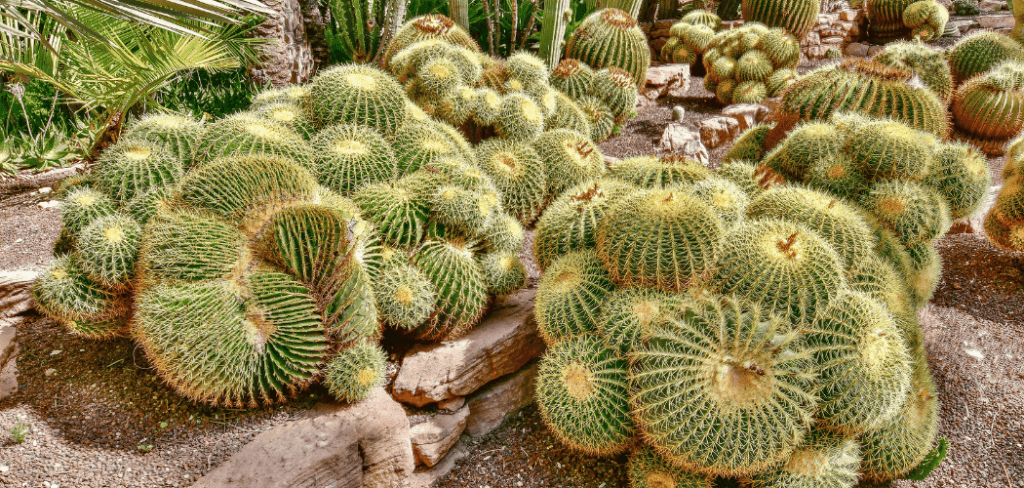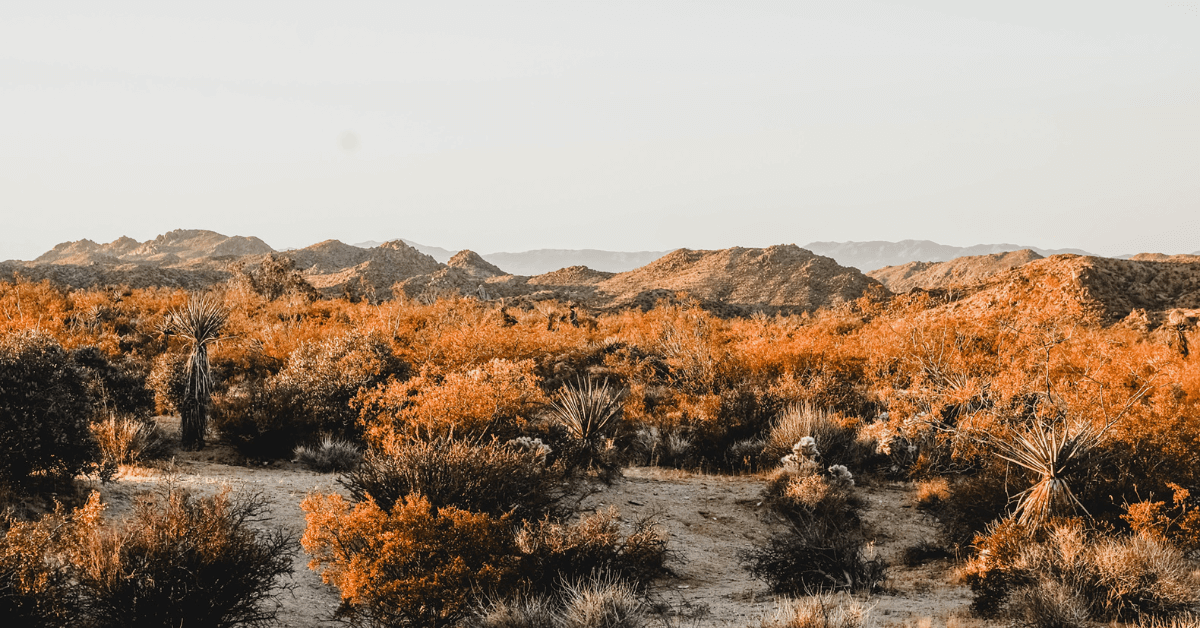The desert is one of the harshest environments on earth. Its arid climate, extreme temperatures, and lack of water make it a challenging place to survive. However, despite its harsh conditions, the desert is also home to a variety of edible plants that have sustained humans and animals for centuries.
As an outdoor enthusiast, knowing what edible plants grow in the desert can be a valuable survival skill, as well as an opportunity to explore and appreciate the unique plant life that thrives in such a hostile environment. With that in mind, today we’ll explore some of the most common and nutritious edible plants that grow in the desert, how to identify them, and how to prepare them for consumption.
So, if you’re ready to embark on a culinary adventure through the desert, let’s get started!
1. Prickly Pear Cactus
The Prickly Pear Cactus is a common sight in many desert landscapes. With its distinctive paddle-shaped leaves and spiny exterior, it may not look like the most appetizing plant. However, don’t let its appearance fool you. The Prickly Pear Cactus is a highly nutritious plant that has been used as a food source for thousands of years by indigenous peoples in the Americas.
The Prickly Pear Cactus has several edible parts, including the pads, fruits, and flowers. The pads, also known as nopales, are the most commonly consumed part of the plant. They can be eaten raw or cooked and are often used in traditional Mexican cuisine.
To prepare the pads for consumption, simply remove the spines and prickly hairs with a sharp knife or vegetable peeler. The pads can then be sliced and cooked in a variety of ways, such as grilling, sautéing, or boiling.
In addition to being a tasty addition to meals, Prickly Pear Cactus pads are also packed with nutrients. They are a good source of dietary fiber, vitamin C, vitamin B6, magnesium, and potassium. They may also have anti-inflammatory and blood sugar-lowering properties.
The fruit of the Prickly Pear Cactus, also known as tunas, is another edible part of the plant. They are sweet and juicy, with a flavor similar to watermelon or strawberry. To prepare the fruit for consumption, simply remove the spines and skin, and then eat the flesh inside.
The seeds are also edible and can be ground into a flour or used as a coffee substitute.
The flowers of the Prickly Pear Cactus are also edible and are often used to make tea. They have a slightly sweet taste and a delicate flavor. To make Prickly Pear Cactus flower tea, simply steep the flowers in hot water for several minutes.
2. Mesquite Trees
Mesquite trees are a common sight in many desert regions, and they are an excellent source of food for both humans and animals. The tree produces long, flat seed pods that are high in protein, fiber, and nutrients. The pods can be harvested and ground into a flour that can be used in a variety of recipes, including bread, cakes, and cookies.
To harvest the pods, wait until they have ripened and turned brown on the tree. Then, use a long pole or stick to knock the pods down. Once the pods are on the ground, they can be gathered and either ground into flour immediately or stored for later use.
To grind the pods into flour, you can use a mortar and pestle or a food processor.
Mesquite flour has a sweet, nutty flavor that is often described as similar to caramel or molasses. It also has a low glycemic index, making it a great alternative to traditional flours for those watching their blood sugar levels.
In addition to its culinary uses, Mesquite flour has also been used medicinally by indigenous peoples in the Americas to treat a variety of ailments, including diarrhea and stomach issues.
In addition to the pods, other parts of the Mesquite tree are also edible. The leaves can be used to make tea, which is said to have a slightly sweet and nutty flavor. The sap from the tree can also be used to make a sweet syrup, although it can be difficult to extract.
3. Agave
Agave plants are well known for their use in making tequila, but they also have a long history of use as a food source in the desert. The plant’s leaves are thick and fleshy, with sharp spines along the edges. The center of the plant, known as the heart or piña, is the part that is harvested for food.
To harvest the piña, the leaves are removed, revealing the core of the plant. The piña can then be roasted in a pit or oven until it is soft and caramelized. The resulting flesh can be eaten on its own or used in a variety of recipes, including soups, stews, and salads.
In addition to its culinary uses, the Agave plant has also been used medicinally by indigenous peoples in the Americas. The sap from the plant can be used to treat wounds, while the leaves can be used to make a poultice for skin irritations.
It’s worth noting that not all species of Agave are edible, and some can be toxic if not prepared properly. Therefore, it’s important to do your research and only consume species that are known to be safe for consumption.
4. Barrel Cactus

The barrel cactus is a common sight in many desert regions, and it is also an important source of food and water for both humans and animals. The cactus can grow up to 10 feet tall and is covered in spines that protect it from predators.
The top of the barrel cactus can be sliced off to reveal a pulpy interior that is high in moisture content. The pulp can be eaten raw or cooked, and it has a slightly sweet flavor that is similar to watermelon. In addition to its use as a food source, the pulp can also be used to make a refreshing drink.
To make the drink, the pulp is mashed and then mixed with water. The resulting mixture is then strained to remove any seeds or pulp, leaving behind a clear liquid that can be drunk immediately or stored for later use.
In addition to its edible uses, the barrel cactus has also been used medicinally by indigenous peoples in the Americas. The pulp and sap of the cactus have been used to treat a variety of ailments, including burns and infections.
It’s worth noting that the spines of the barrel cactus can be dangerous, and it’s important to use caution when handling the plant. The spines can cause injury and can also become embedded in the skin, making them difficult to remove.
5. Desert Ironwood
The Desert Ironwood is a slow-growing tree that is native to the Sonoran Desert in Arizona and Mexico. It is highly valued by the indigenous peoples of the region for its dense, durable wood, which has been used for centuries to make tools, weapons, and carvings.
In addition to its practical uses, the Desert Ironwood is also an important food source in the desert. The tree produces pods that are rich in protein and can be roasted and ground into a nutritious flour. The flour can then be used to make a variety of foods, including bread, porridge, and cakes.
Harvesting the pods is not an easy task, as they can be difficult to find and the tree’s thorns can be sharp and dangerous. However, with careful handling and preparation, the pods can provide a valuable source of nutrition for those living in the desert.
The Desert Ironwood is also important ecologically, as it provides habitat and food for a variety of animals, including birds, insects, and mammals. The tree’s deep roots also help to prevent erosion and provide stability to the soil in the harsh desert environment.
Despite its value, the Desert Ironwood is threatened by over-harvesting, habitat loss, and climate change. As such, it is important to protect and conserve this valuable tree for future generations.
Recap of what edible plants grow in the desert
In the desert, where water and resources can be scarce, knowing which plants are edible can be a crucial survival skill. Let’s recap the different types of edible plants that can be found in the desert.
A. Prickly Pear Cactus
The Prickly Pear Cactus is a common sight in the desert, and its fruit can be harvested and consumed. The fruit is high in vitamin C and can be eaten raw, or cooked into a syrup or jam. The pads of the cactus can also be cooked and eaten like a vegetable.
B. Mesquite Trees
The pods of the Mesquite Tree are rich in protein and can be ground into a nutritious flour. This flour can be used to make a variety of foods, including bread, porridge, and cakes. The pods can also be eaten raw or cooked.
C. Agave
The Agave plant has long been used by indigenous people as a source of food and medicine. The leaves can be roasted and eaten, and the sap can be boiled down into a sweet syrup.
D. Barrel Cactus
The Barrel Cactus is another cactus that can provide a source of food in the desert. Its fruit can be harvested and consumed, either raw or cooked. The seeds can also be roasted and ground into a nutritious flour.
E. Desert Ironwood
The pods of the Desert Ironwood tree are a valuable source of protein and can be ground into a nutritious flour. The flour can be used to make a variety of foods, including bread, porridge, and cakes.
These are just a few examples of the many edible plants that can be found in the desert. It’s important to note, however, that not all plants in the desert are safe to eat, and it’s essential to have proper knowledge and training before consuming any wild plants.
In addition to providing a source of food, these plants also have cultural and ecological significance. They have been used by indigenous peoples for centuries and are an important part of the desert ecosystem. By learning about and respecting these plants, we can better appreciate the unique and valuable environment of the desert.
Related: What Are Some Edible Plants In The Sahara Desert
Conclusion – What Edible Plants Grow In The Desert?
Some edible plants that grow in the desert include prickly pear cactus, mesquite trees, agave, barrel cactus, and desert ironwood.
When foraging for edible plants in the desert, it’s essential to be aware of the potential dangers, such as poisonous plants or harmful insects. It’s also important to respect the environment and not over-harvest the plants, as they play a crucial role in the desert ecosystem.
By learning about and appreciating the edible plants of the desert, we can gain a deeper understanding and appreciation of this unique and valuable environment. We can also develop valuable survival skills that may come in handy in case of emergency situations.
